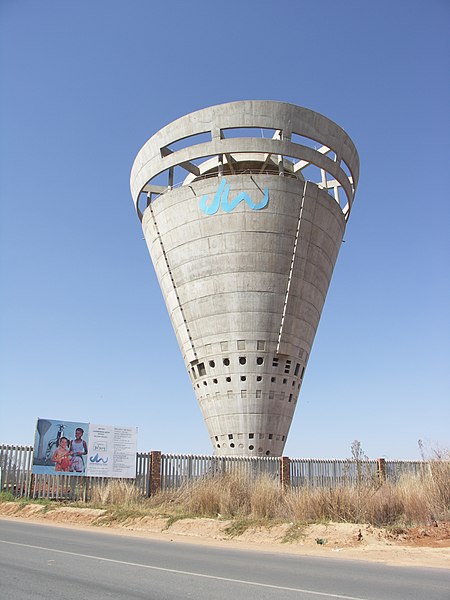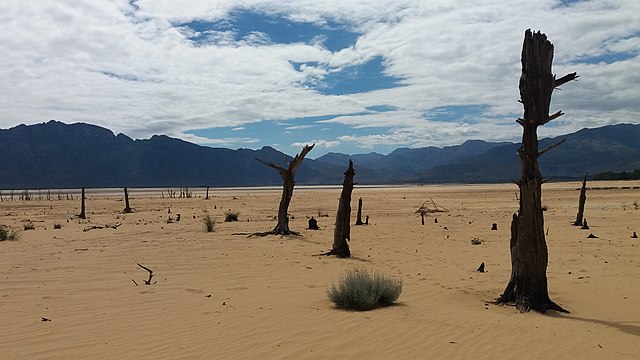Water supply and sanitation in South Africa
Water supply and sanitation in South Africa is characterised by both achievements and challenges. After the end of Apartheid South Africa's newly elected government struggled with the then growing service and backlogs with respect to access to water supply and sanitation developed. The government thus made a strong commitment to high service standards and to high levels of investment subsidies to achieve those standards. Since then, the country has made some progress with regard to improving access to water supply: It reached universal access to an improved water source in urban areas, and in rural areas the share of those with access increased from 66% to 79% from 1990 to 2010.
The Katse dam in Lesotho is an important source of water supply for the arid Gauteng area around Johannesburg, the industrial heartland of South Africa.
A water tower in Midrand, Johannesburg
The skyline of Johannesburg's Central Business District as seen from the observatory of the Carlton Centre
The Cape Town water crisis in South Africa was a multi-year period in 2015–2020 of water shortage in the Western Cape region, most notably affecting the City of Cape Town. Dam water levels began decreasing in 2015 and the Cape Town water crisis peaked during mid-2017 to mid-2018 when water levels hovered between 14 and 29 percent of total dam capacity.
Poster issued in 2017 by Western Cape government calling for people to conserve water
Theewaterskloof Dam at approximately 12% on 10 February 2018
Cape Town's largest reservoir, Theewaterskloof, was at 11% capacity in March 2018
The Flower Monument in the Westridge Gardens was erected to memorialise a prayer meeting that called for good rains during the water crisis.







